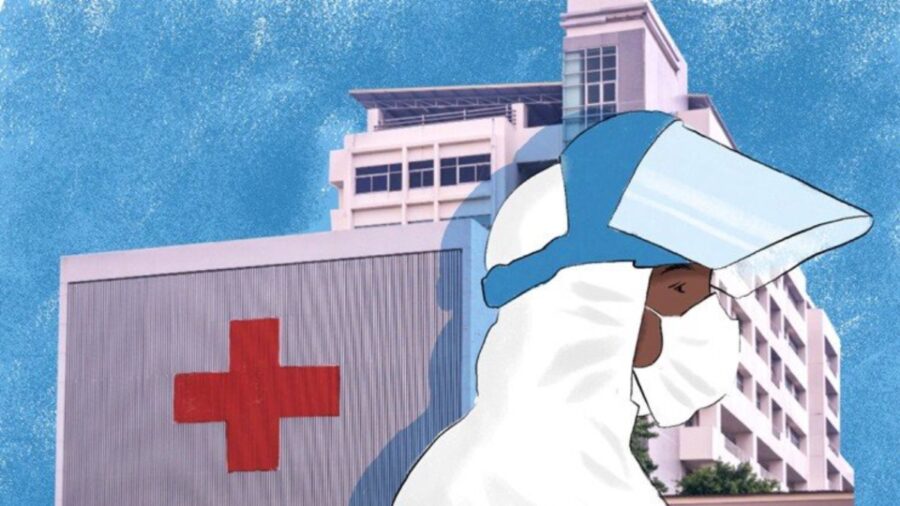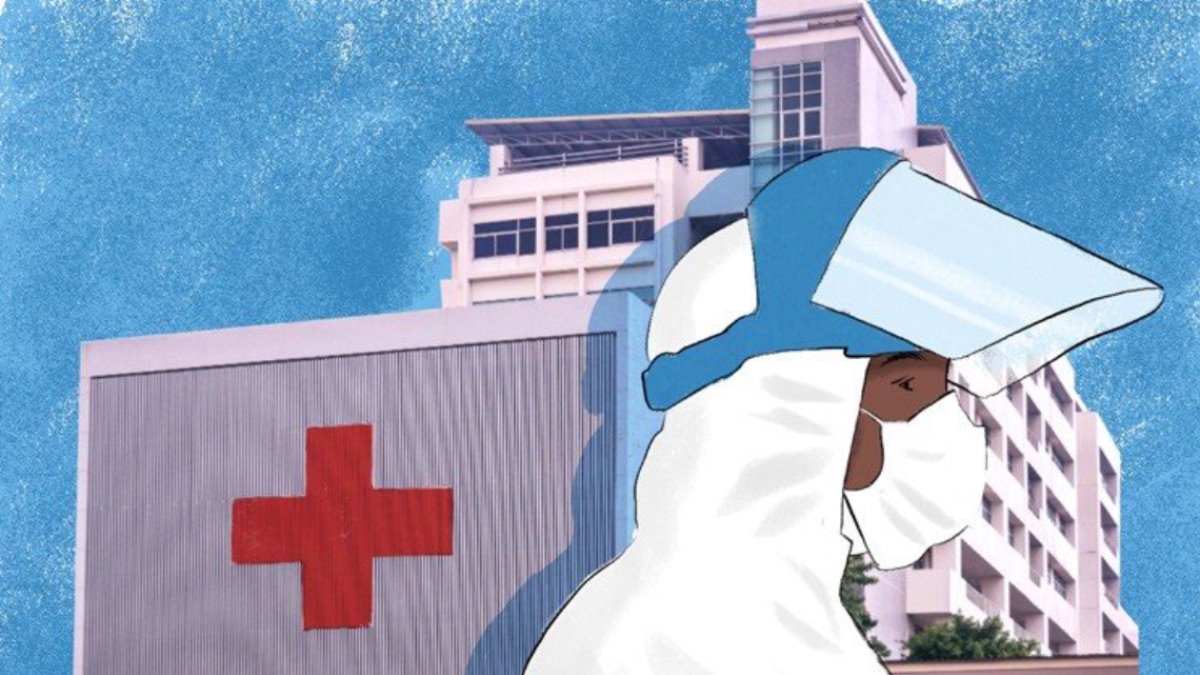
Black Donors Needed to Help Save Lives in South Africa
Many South Africans with blood diseases and cancers are dying because they cannot find bone marrow donors. Finding a suitable bone marrow donor is extremely difficult. Hereditary matters in finding a match and donors are usually found within the patient’s population group. But only 30% of donors are people of colour. The South African Bone […]

Many South Africans with blood diseases and cancers are dying because they cannot find bone marrow donors.
- Finding a suitable bone marrow donor is extremely difficult.
- Hereditary matters in finding a match and donors are usually found within the patient’s population group.
- But only 30% of donors are people of colour.
- The South African Bone Marrow Registry is urgently seeking more people of colour to register as donors.
- Great advances have been made and today most bone marrow donations are done through a non-invasive process.
The South African Bone Marrow Registry (SABMR) is urgently seeking more people of colour to register as donors — to help give more South Africans a better shot at a second chance at life.
Every year, thousands of people around the world reach a critical point in their medical journey where the only possible cure for their condition is a bone marrow transplant. But because donors are usually found in a patient’s ethnic group, and with people of colour representing only 30% of all registered donors in South Africa, many South Africans may not find their lifesaving match in time— and many don’t survive.
Having more donors will improve the chances that a patient will be able to find their match. But getting more people to register means correcting longstanding misconceptions about what it means to be a bone marrow donor. Because, as it turns out, being a donor is not as painful, invasive or permanent as many people believe.
What is a bone marrow transplant?
Bone marrow is the tissue in the body where red blood cells, white blood cells and blood platelets are produced. Each of these is important to a person’s immune system: red blood cells carry oxygen, white blood cells fight infection and blood platelets prevent bleeding.
For many patients with immune deficiency syndromes and blood diseases like leukaemia and anaemia, their bone marrow isn’t producing healthy blood cells and a bone marrow transplant may be the only way for them to get well.
The procedure, which is relatively simple and similar to a blood transfusion, replaces their debilitated bone marrow with healthy bone marrow stem cells so that they can start producing normal, healthy blood.
Bone marrow transplants successfully cure over 60% of recipients.
For a child like Zivile Nkatu, a bone marrow transplant means a second chance at a life that’s just begun. After being diagnosed with leukaemia at the age of one and searching for a donor for over five years, Zivile finally received a bone marrow transplant and is now a healthy and happy 11-year-old in Grade 4.
The same is true for Ian Zwanepoel, whose transplant at just 10 months old cured him of a rare, life-threatening genetic disorder called IPEX, and Chanelle Matthee, who defied the odds by surviving just a 10% chance at life thanks to a series of transplants, all before her eighth birthday.
But it’s not only children who receive bone marrow transplants. Nonhlanhla Mtshali, a Johannesburg nurse in her thirties, received a transplant in 2017 which cured her Aplastic Anaemia.
There are hundreds of stories just like these – of young children and healthy adults whose lives were upended by illness, and of the random strangers who stepped up for them in a time of desperate need.
But before a patient can receive a transplant, that stranger must be found. It has to be someone whose bone marrow resembles the patient’s marrow, enough to make them eligible to donate. Only about a third of patients in need of a transplant will have a compatible family donor, which means most people in need of a transplant will need a stranger to donate. Organisations like the South African Bone Marrow Registry (SABMR) help patients find those donors, and then coordinate the donation from start to finish.
Much easier to find a match from people in the same population
Unfortunately, if you need a bone marrow transplant and you simply choose a random person, there is only a 1 in 100,000 chance that person will be a match. In South Africa that probability maybe even less for people of colour. Donors are usually found within a patient’s population group, and because only about 30% of the near 74,000 registered donors in South Africa are people of colour, it is much less likely that a patient in need will find their match if that patient is black (including coloured).
Most people know that red blood cells have different groups (A, B and O) and that to receive blood from someone, you must have the same or compatible blood group. But white blood cells also have groups, called HLA, or human leukocyte antigens. Instead of a few different groups, there are thousands of them, and more are discovered all the time.
HLA are inherited from your parents in a group called a haplotype. Your haplotype is an almost unique combination of different HLA, and that exact combination can typically be traced back many generations in your family, except in the very rare case of a genetic mutation that changes that combination slightly.
Here’s why that’s important: in order for a transplant to work, the patient without a family match must find a complete stranger who inherited the same or very similar haplotype from their biological parents as the patient did from their own parents.
For example, a haplotype that is very common in people of European descent is perhaps not very common in people of African descent. One that is common in Coloured people may not be very common in Asian people.
Many South Africans have a heritage that can be traced back to indigenous Southern African groups like the Khoi San. Many-Coloured people have inherited genes from indigenous groups that over time have merged with genetics from other regions, such as Indonesia, Malaysia, Madagascar, East Africa and India. Because of this, many black (and coloured) South Africans will have haplotypes that may not be found anywhere else in the world, meaning it’s probable that a match for a South African patient of colour will only be found in another South African person of colour. And without a sufficient number of black South Africans registered to be donors, there is a smaller chance of finding a match quickly, or at all.
It’s devastating, but not uncommon, that black patients in need can’t find a match when they need one. Farnaaz Bedford, a Harvest Coordinator at the SABMR, says, “If we have fewer people of colour on our database, then we won’t have a match for a patient of colour in desperate need of a transplant, and it minimises the chance of survival.”
Saving someone’s life
In South Africa, anyone aged 16 to 45 and in general good health can register to be a bone marrow donor. However, many people choose not to register because of misunderstandings about what it means to be a donor. Many people believe that the donation process is painful, invasive and may require sacrificing an irreplaceable part of the body. But doctors have made incredible advances in the last few decades that have made donating easier, faster and non-invasive.
Often, people believe that bone marrow is donated through a highly invasive surgery involving bone drilling or a lumbar puncture. But today, over 90% of people who donate will do so through a process called peripheral blood stem cell donation (PBSC), which for most donors is a virtually painless process that’s done exclusively through the blood. The procedure is nonsurgical, non-anaesthetic and completed in about six hours at a private, specialist centre dedicated to bone marrow transplants.
In PBSC, a portion of the donor’s blood is removed through a needle in one arm, passed through a machine that collects stem cells, and returned through a needle in your other arm. The procedure requires a short set of injections in the few days prior to stimulate the production of extra stem cells. During their donation, most donors watch television, work remotely or even nap. After the donation is complete, an SABMR courier will transport the collected stem cells to the patient’s transplant centre, while the donors head home and are back to feeling normal in a day or so.
Donors’ bone marrow starts regenerating itself immediately and their body continues to produce normal, healthy stem cells, so there is nothing being permanently removed from the donor’s body.
On rare occasions, usually, if there’s a very young child in need of a transplant, donors may be asked if they are willing to donate bone marrow from the pelvic bone, which is done under general anaesthesia in an operating theatre, but this is not common and it is entirely at the donor’s own discretion.
Sibongile Jimlongo, a 25-year-old law graduate from the University of Western Cape, donated bone marrow in 2017 for a South African child in need. “For the patient, it’s a big deal, but for me it’s small,” she says. “People are under the impression that it’s very invasive. But things have evolved. It’s been a pleasure to talk to people about it to say, ‘I’m here, I’m okay.’ That gift of life that we’ve been given, we need to pay it forward to the next person.”
Donating is completely free, including all required transport, accommodation and meals. Donors can even bring a companion with them to their donation, and an SABMR staff member is always present to ensure the donor is well cared for.
Because finding a match is so rare, most people who register to be donors will never get called to be one. But it’s important to register, because you may be that rare match for somebody already out there waiting for their lifesaving transplant. If you’re identified as a potential match, the SABMR will phone you to see if you’re still interested. If your circumstances have changed, you’re not obliged to say yes.
Most consider the chance to help a stranger a rare and incredible gift. Terence Mentor, the creator of the popular fatherhood blog AfroDaddy and a registered donor with the SABMR since 2012, is waiting hopefully for the day he can help save a life. “Being registered makes me feel good about myself,” Terence says. “I feel like a hero, but I’ve done very, very little. It’s just a cheek swab.”
